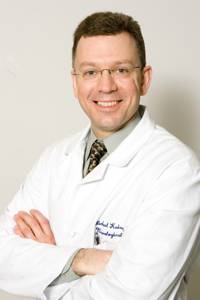“It all started one winter morning in 1985,” says antiques dealer Carol Marks, “when I fell down a set of icy concrete stairs.” Carol was able to walk away from the injury but she was left with terrible back pain–pain that she would battle for the next 25 years.
Eventually, even with prescription pain medications, sometimes she could barely get through a day. “Living was hell,” she says. That all finally changed when she met Dr. Michael Kaiser.
Before their meeting, Carol says she tried everything to get better: she saw a multitude of doctors, physical therapists and pain management specialists; she endured trigger-point injections, spinal manipulations, electrical therapy, more than a dozen epidural injections, and even spinal surgery.
In 2007, with a diagnosis of severe degeneration and instability of her lumbar spine, a surgeon in her home state of New Jersey performed a spinal fusion. “He fused my back from L-4 to S-1,” says Carol. It helped at first, but then she says, “About a-year-and-a-half later, the pain escalated to an alarming degree.” She began to experience numbness and tingling in her feet and severe spasm-like pain radiating down her left leg.
By the beginning of 2010, Carol says the pain was worse and her left leg was getting weak. Worried, she asked her doctor for another MRI. “It was at this appointment that he suggested that I needed to go on antidepressants,” says Carol. “ After another physical exam I was told that there were no findings or changes in my back that would support the degree of pain I had reported.”
Angry and feeling unheard, Carol sought another opinion and got the MRI. She says, “Within 3 days I was told by this doctor that a very significant and large cyst had developed in my spine and was wrapping around important nerves, and that the only solution for me would be another surgery as soon as possible.”
That cyst, according to Dr. Kaiser, was actually an extremely large extruded disc fragment above the level of her old spinal fusion. Her new MRI also showed increased spinal degeneration and nerve impingement.
“By the time I had my first appointment with Dr. Kaiser in February of 2010, “ she says. “I was on a significant dosage of morphine which only moderated the pain. I was functioning on a minimal level and felt hopeless about any recovery. I couldn’t stand or sit comfortably and was having trouble walking. The pain was electric; it felt like I had a ‘live wire’ in my lower back and leg.”
Carol remembers her first visit with Dr. Kaiser, “ I knew so soon into the appointment that I had found someone so different and so unique. He was calm, clearly accomplished, and had a very clear vision of my needs and prognosis–and treated me with the utmost respect and empathy. His integrity and confidence were clear when he commented that I might still want to seek out other opinions. NO other surgeon I had seen had been that kind and honest.”
After Dr. Kaiser reviewed Carol’s medical records, test results and performed a thorough physical exam, he agreed that Carol needed surgery.
During the weeks before her operation, Carol says she also came to know Dr. Kaiser’s Nurse, Rosemary McGill. “She was an angel,” says Carol. “Such a patient and fine practitioner, she was my support system.”
On April 7, 2010 Carol arrived at Columbia Presbyterian Hospital where Dr. Kaiser performed two operations to remove the old hardware, clean up the disk fragment, clear around the nerves that were being compressed, and re-fuse her lower spine.
“When I woke up,” says Carol, “ I was in a state of calm. I felt relief and gratefulness to Dr. Kaiser for getting me through the ordeal.” Being in a teaching hospital also gave her another level of comfort. ”The teaching staff stays on top of your case and there is always someone you can ask for information about your situation. The staff is very interested in your comfort and there is a tremendous amount of monitoring any pain you may have.”
Carol was discharged from the hospital and began extensive physical therapy to regain her strength. Five weeks after surgery, she says, the pain was already 90 to 95% better.
Last Fall, Carol came into the Spine Center at Columbia for her last follow-up with Dr. Kaiser. By then she had stopped all prescription pain medication and had resumed her normal activities. “I am active in my business [as an antiques dealer],” says Carol. “ It requires a lot of energy and activity and driving. I had a wonderful surgeon. He took such fine care of me–my whole being–not just my spine. It took a long time but I am so grateful that I found him.”


